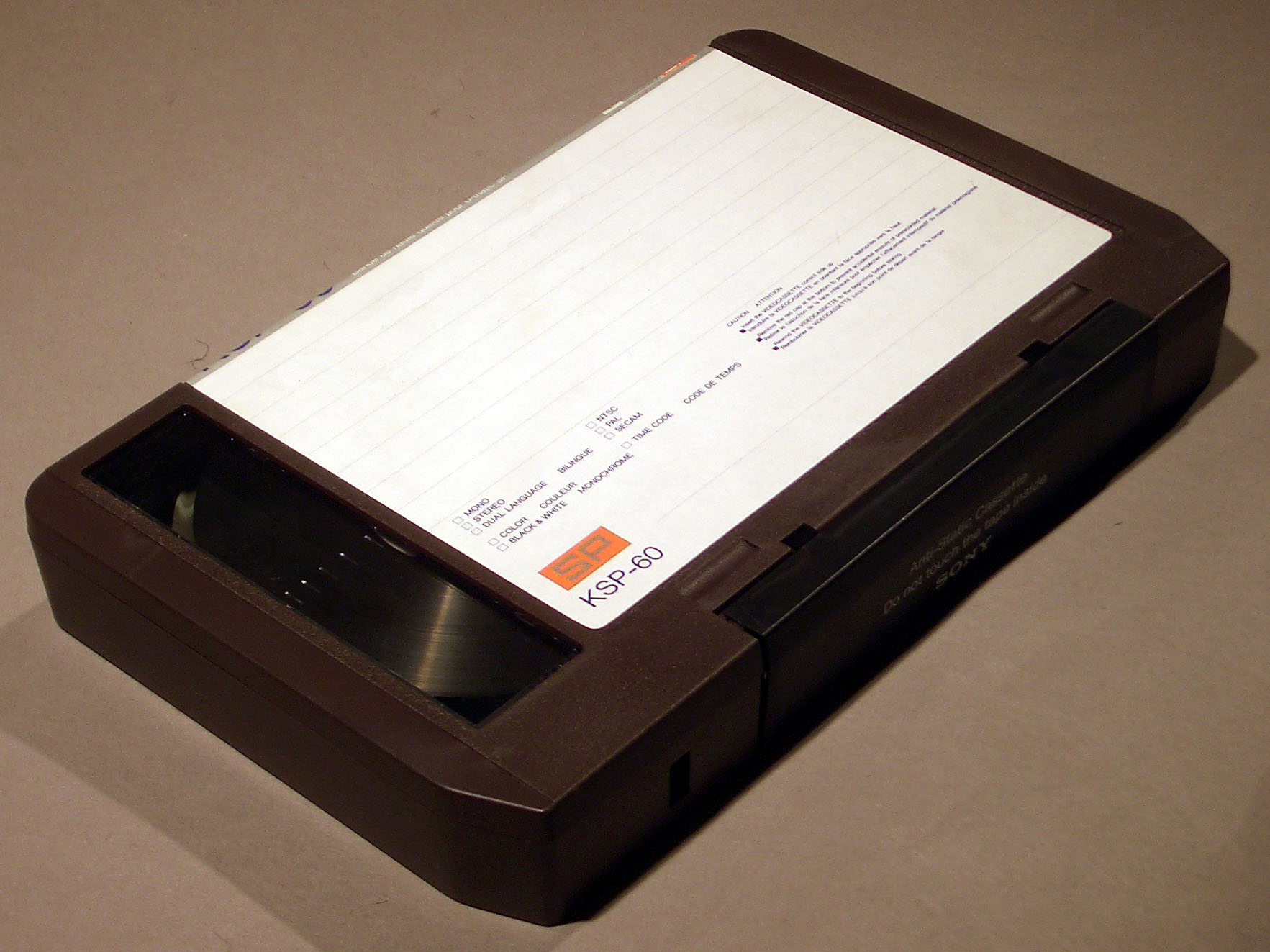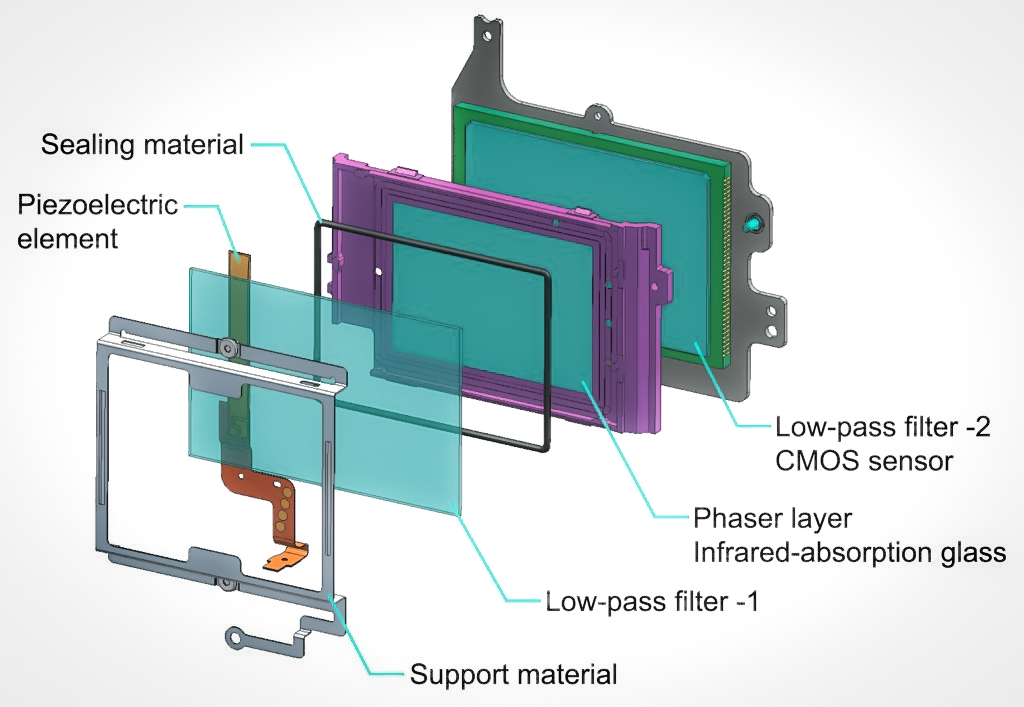|
Nyquist Frequency
In signal processing, the Nyquist frequency (or folding frequency), named after Harry Nyquist, is a characteristic of a sampler, which converts a continuous function or signal into a discrete sequence. In units of cycles per second ( Hz), its value is one-half of the sampling rate (samples per second). When the highest frequency (bandwidth) of a signal is less than the Nyquist frequency of the sampler, the resulting discrete-time sequence is said to be free of the distortion known as aliasing, and the corresponding sample rate is said to be above the Nyquist rate for that particular signal. In a typical application of sampling, one first chooses the highest frequency to be preserved and recreated, based on the expected content (voice, music, etc.) and desired fidelity. Then one inserts an anti-aliasing filter ahead of the sampler. Its job is to attenuate the frequencies above that limit. Finally, based on the characteristics of the filter, one chooses a sample rate (and corre ... [...More Info...] [...Related Items...] OR: [Wikipedia] [Google] [Baidu] |
Nyquist Frequency & Rate
Nyquist may refer to: *Nyquist (surname) *Nyquist (horse), winner of the 2016 Kentucky Derby *Nyquist (programming language), computer programming language for sound synthesis and music composition See also *Johnson–Nyquist noise, thermal noise *Nyquist stability criterion, in control theory **Nyquist plot, signal processing and electronic feedback *Nyquist–Shannon sampling theorem, fundamental result in the field of information theory **Nyquist frequency, digital signal processing **Nyquist rate, telecommunication theory **Nyquist ISI criterion, telecommunication theory *6625 Nyquist, a main-belt asteroid *Nyquist filter, a filter used in television systems *Enquist Enquist is a surname of Swedish origin which may refer to: * Jan Enquist, Swedish rear admiral * Jeff Enquist, American soccer player * Lynn W. Enquist, American professor in molecular biology * Oskar Enquist, Imperial Russian vice admiral of Swedi ... * Nyqvist (other) {{disambiguation ... [...More Info...] [...Related Items...] OR: [Wikipedia] [Google] [Baidu] |
Nyquist Rate
In signal processing, the Nyquist rate, named after Harry Nyquist, is a value (in units of samples per second or hertz, Hz) equal to twice the highest frequency (bandwidth) of a given function or signal. When the function is digitized at a higher sample rate (see ), the resulting discrete-time sequence is said to be free of the distortion known as aliasing. Conversely, for a given sample-rate the corresponding Nyquist frequency in Hz is one-half the sample-rate. Note that the ''Nyquist rate'' is a property of a continuous-time signal, whereas ''Nyquist frequency'' is a property of a discrete-time system. The term ''Nyquist rate'' is also used in a different context with units of symbols per second, which is actually the field in which Harry Nyquist was working. In that context it is an upper bound for the symbol rate across a bandwidth-limited baseband channel such as a telegraph line or passband channel such as a limited radio frequency band or a frequency division mult ... [...More Info...] [...Related Items...] OR: [Wikipedia] [Google] [Baidu] |
Aliasing
In signal processing and related disciplines, aliasing is an effect that causes different signals to become indistinguishable (or ''aliases'' of one another) when sampled. It also often refers to the distortion or artifact that results when a signal reconstructed from samples is different from the original continuous signal. Aliasing can occur in signals sampled in time, for instance digital audio, or the stroboscopic effect, and is referred to as temporal aliasing. It can also occur in spatially sampled signals (e.g. moiré patterns in digital images); this type of aliasing is called spatial aliasing. Aliasing is generally avoided by applying low-pass filters or anti-aliasing filters (AAF) to the input signal before sampling and when converting a signal from a higher to a lower sampling rate. Suitable reconstruction filtering should then be used when restoring the sampled signal to the continuous domain or converting a signal from a lower to a higher sampling rate. For spa ... [...More Info...] [...Related Items...] OR: [Wikipedia] [Google] [Baidu] |
Hearing Range
Hearing range describes the range of frequencies that can be heard by humans or other animals, though it can also refer to the range of levels. The human range is commonly given as 20 to 20,000 Hz, although there is considerable variation between individuals, especially at high frequencies, and a gradual loss of sensitivity to higher frequencies with age is considered normal. Sensitivity also varies with frequency, as shown by equal-loudness contours. Routine investigation for hearing loss usually involves an audiogram which shows threshold levels relative to a normal. Several animal species are able to hear frequencies well beyond the human hearing range. Some dolphins and bats, for example, can hear frequencies over 100 kHz. Elephants can hear sounds at 14–16 Hz, while some whales can hear infrasonic sounds as low as 7 Hz. Measurement A basic measure of hearing is afforded by an audiogram, a graph of the absolute threshold of hearing (minimum discer ... [...More Info...] [...Related Items...] OR: [Wikipedia] [Google] [Baidu] |
44100 Hz
In digital audio, 44,100 Hz (alternately represented as 44.1 kHz) is a common sampling frequency. Analog audio is often recorded by sampling it 44,100 times per second, and then these samples are used to reconstruct the audio signal when playing it back. The 44.1 kHz audio sampling rate is widely used due to the compact disc (CD) format, dating back to its use by Sony from 1979. History The 44.1 kHz sampling rate originated in the late 1970s with PCM adaptors, which recorded digital audio on video cassettes,Specifically U-matic cassettes notably the Sony PCM-1600 introduced in 1979 and carried forward in subsequent models in this series. This then became the basis for Compact Disc Digital Audio (CD-DA), defined in the Red Book standard in 1980. Its use has continued as an option in 1990s standards such as the DVD, and in 2000s, standards such as HDMI. This sampling frequency is commonly used for MP3 and other consumer audio file formats which were origin ... [...More Info...] [...Related Items...] OR: [Wikipedia] [Google] [Baidu] |
Compact Disc
The compact disc (CD) is a Digital media, digital optical disc data storage format that was co-developed by Philips and Sony to store and play digital audio recordings. In August 1982, the first compact disc was manufactured. It was then released in October 1982 in Japan and branded as ''Compact Disc Digital Audio, Digital Audio Compact Disc''. The format was later adapted (as CD-ROM) for general-purpose data storage. Several other formats were further derived, including write-once audio and data storage (CD-R), rewritable media (CD-RW), Video CD (VCD), Super Video CD (SVCD), Photo CD, Picture CD, Compact Disc-Interactive (CD-i) and Enhanced Music CD. Standard CDs have a diameter of and are designed to hold up to 74 minutes of uncompressed stereo digital audio or about 650 mebibyte, MiB of data. Capacity is routinely extended to 80 minutes and 700 mebibyte, MiB by arranging data more closely on the same sized disc. The Mini CD has various diameters ranging from ; t ... [...More Info...] [...Related Items...] OR: [Wikipedia] [Google] [Baidu] |
Anti-aliasing Filter
An anti-aliasing filter (AAF) is a filter used before a signal sampler to restrict the bandwidth of a signal to satisfy the Nyquist–Shannon sampling theorem over the band of interest. Since the theorem states that unambiguous reconstruction of the signal from its samples is possible when the power of frequencies above the Nyquist frequency is zero, a brick wall filter is an idealized but impractical AAF. A practical AAF makes a trade off between reduced bandwidth and increased aliasing. A practical anti-aliasing filter will typically permit some aliasing to occur or attenuate or otherwise distort some in-band frequencies close to the Nyquist limit. For this reason, many practical systems sample higher than would be theoretically required by a perfect AAF in order to ensure that all frequencies of interest can be reconstructed, a practice called oversampling. Optical applications The Pentax K-3 from Ricoh introduced a unique sensor-based anti-aliasing filter. The filter ... [...More Info...] [...Related Items...] OR: [Wikipedia] [Google] [Baidu] |
Aliasing
In signal processing and related disciplines, aliasing is an effect that causes different signals to become indistinguishable (or ''aliases'' of one another) when sampled. It also often refers to the distortion or artifact that results when a signal reconstructed from samples is different from the original continuous signal. Aliasing can occur in signals sampled in time, for instance digital audio, or the stroboscopic effect, and is referred to as temporal aliasing. It can also occur in spatially sampled signals (e.g. moiré patterns in digital images); this type of aliasing is called spatial aliasing. Aliasing is generally avoided by applying low-pass filters or anti-aliasing filters (AAF) to the input signal before sampling and when converting a signal from a higher to a lower sampling rate. Suitable reconstruction filtering should then be used when restoring the sampled signal to the continuous domain or converting a signal from a lower to a higher sampling rate. For spa ... [...More Info...] [...Related Items...] OR: [Wikipedia] [Google] [Baidu] |
Signal Processing
Signal processing is an electrical engineering subfield that focuses on analyzing, modifying and synthesizing ''signals'', such as audio signal processing, sound, image processing, images, and scientific measurements. Signal processing techniques are used to optimize transmissions, Data storage, digital storage efficiency, correcting distorted signals, subjective video quality and to also detect or pinpoint components of interest in a measured signal. History According to Alan V. Oppenheim and Ronald W. Schafer, the principles of signal processing can be found in the classical numerical analysis techniques of the 17th century. They further state that the digital refinement of these techniques can be found in the digital control systems of the 1940s and 1950s. In 1948, Claude Shannon wrote the influential paper "A Mathematical Theory of Communication" which was published in the Bell System Technical Journal. The paper laid the groundwork for later development of information c ... [...More Info...] [...Related Items...] OR: [Wikipedia] [Google] [Baidu] |
Discrete-time
In mathematical dynamics, discrete time and continuous time are two alternative frameworks within which variables that evolve over time are modeled. Discrete time Discrete time views values of variables as occurring at distinct, separate "points in time", or equivalently as being unchanged throughout each non-zero region of time ("time period")—that is, time is viewed as a discrete variable. Thus a non-time variable jumps from one value to another as time moves from one time period to the next. This view of time corresponds to a digital clock that gives a fixed reading of 10:37 for a while, and then jumps to a new fixed reading of 10:38, etc. In this framework, each variable of interest is measured once at each time period. The number of measurements between any two time periods is finite. Measurements are typically made at sequential integer values of the variable "time". A discrete signal or discrete-time signal is a time series consisting of a sequence of quantities. ... [...More Info...] [...Related Items...] OR: [Wikipedia] [Google] [Baidu] |
Bandwidth (signal Processing)
Bandwidth is the difference between the upper and lower frequencies in a continuous band of frequencies. It is typically measured in hertz, and depending on context, may specifically refer to ''passband bandwidth'' or ''baseband bandwidth''. Passband bandwidth is the difference between the upper and lower cutoff frequencies of, for example, a band-pass filter, a communication channel, or a signal spectrum. Baseband bandwidth applies to a low-pass filter or baseband signal; the bandwidth is equal to its upper cutoff frequency. Bandwidth in hertz is a central concept in many fields, including electronics, information theory, digital communications, radio communications, signal processing, and spectroscopy and is one of the determinants of the capacity of a given communication channel. A key characteristic of bandwidth is that any band of a given width can carry the same amount of information, regardless of where that band is located in the frequency spectrum. For example, a ... [...More Info...] [...Related Items...] OR: [Wikipedia] [Google] [Baidu] |




